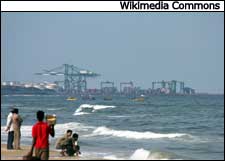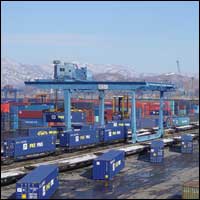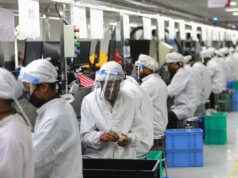Despite a phenomenal rise in the volume of freight traffic movement over the last decade, the country’s logistics infrastructure is lagging behind and continues to be characterised by concerns around costs, profitability, availability of trained manpower and adoption of technology, according to a recently released report by Deloitte and the Indian Chamber of Commerce.
India with a GDP of $1.84 trillion was ranked the tenth largest economy in 2012 by the World Bank. By 2030, the country is expected to have the third largest GDP in the world after China and the US.
The report titled ‘Indian Logistics – Focus on infrastructure creation to sustain and drive growth’ cites the 2012 World Bank’s Logistics Performance Index to reflect the concerns with regard to the Indian logistics sector.
 The 2012 LPI scored 155 countries on six main parameters. The parameters included efficiency of the clearance process (speed, simplicity and predictability of formalities by border control agencies including customs), quality of trade and transport related infrastructure (ports, railroads, roads, Information Technology), ease of arranging competitively priced shipments, competence and quality of logistics services (transport operators, customs brokers), ability to track and trace consignments and the frequency with which shipments reach the consignee within the scheduled or expected delivery time.
The 2012 LPI scored 155 countries on six main parameters. The parameters included efficiency of the clearance process (speed, simplicity and predictability of formalities by border control agencies including customs), quality of trade and transport related infrastructure (ports, railroads, roads, Information Technology), ease of arranging competitively priced shipments, competence and quality of logistics services (transport operators, customs brokers), ability to track and trace consignments and the frequency with which shipments reach the consignee within the scheduled or expected delivery time.
India’s rank in the LPI fell from 39 in 2007 to 46 in 2012. The country lagged behind other major markets such as Brazil (41), China (26), US (9) and Germany (4). Based on quality of trade and transport-related infrastructure, one of the six criteria for measuring performance, the rank deteriorated from 47 in 2010 to 56 in 2012. The fall in ranking indicated congestion witnessed on roads and ports, longer dwell times in ports, longer overall transit times and overloading of trucks leading to faster deterioration of road infrastructure.
In the 2014 LPI, India ranks 54th out of the total 160 countries covered. In terms of infrastructure quality, it is ranked 58th.
The logistics sector, which encompasses transportation, warehousing, cargo consolidation and border clearances, forms the backbone of trade and associated activities. It is also critical for the growth of key sectors in an economy.
“The cost of trading whether by sea, land or air forms a critical component of the final price of a commodity. An efficient logistics system reduces this cost, providing a competitive edge and propelling economic activity,” says the report on Indian logistics sector.
As per a McKinsey study, inefficiencies in logistics infrastructure cost the Indian economy an additional $ 45 billion annually. The study warns that a 2.5 times growth in freight traffic demand by 2020 (compared with 2010 levels) will further stress the country’s infrastructure.
The report by Deloitte and ICC points out that the high demand prospects present an opportunity for logistics industry players.
“As a fast growing economy with one of the largest consumer markets, industries such as automobile, pharmaceuticals, FMCG and retail will drive the demand for logistics in India in the future. Further impetus will come from the increasing emphasis on enhancing manufacturing and exports,” says the report.
The Emerging Market Survey – 2013, conducted by Transport Intelligence ranks India as the second most attractive logistics market in the future after China.











